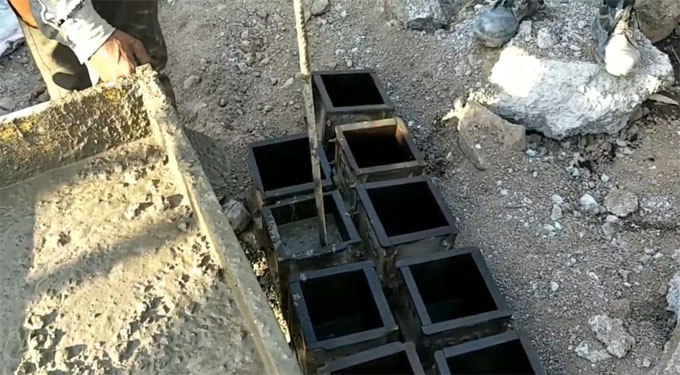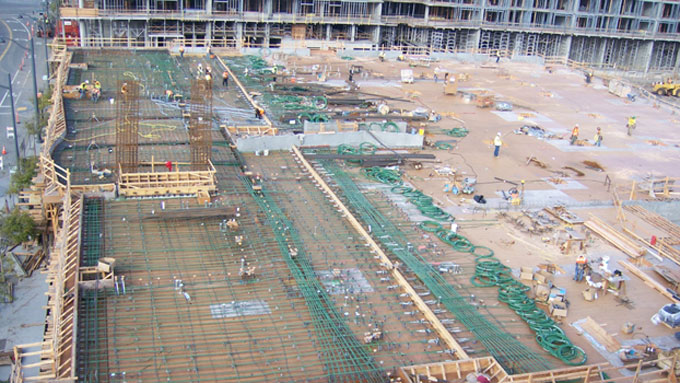In concrete compression test, usually 150mmx150mmx150mm concrete cube samples are arranged for performing test. Can 100mmx100mmx100mm concrete cube samples be applied in the test in place of 150mmx150mmx150mm concrete cube samples?
Fundamentally, the force delivered by a concrete compression machine belongs to a definite value. When normal concrete strength is used i.e. under 50MPa, the stress delivered by a 150mmx150mmx150mm cube is adequate for the machine to crush the concrete sample.
However, when the designed concrete strength is 100MPa, under the equivalent force(about2,000kN) delivered by the machine, the stress under a 150mmx150mmx150mm cube inadequate to crush the concrete cube.
So,100mmx100mmx100mm concrete cubes can be utilized in place of 150mmx150mmx150mm cubes to raise the applied stress to crush the concrete cubes. For normal concrete strength, the cube size of 150mmx150mmx150mm is already adequate for the crushing strength of the machine.
Cube Test:
Tools and Materials: Concrete cube mould with size 150mm or 100mm. It is utilized for aggregate size not surpassing 40mm and 25mm. Cube mould for test should be done from steel or cast iron having smooth inside surface. Every mould should contain steel plate to support and to resist leakage.
Compacting steel rod having 16mm diameter and 600mm length.
Compression test machine:
Methods: Mould and base plate should be properly cleansed and used with oil so that the concrete can’t fix to the side of the cube. Base plate is connected with the mould with bolt and nut.
Fill the cube with concrete in three layers.
Each layer should be consolidated for 25 times. This method is performed systematically and compaction is performed consistently to all the surfaces of the concrete. Compaction can also be performed with machine.
The surface of concrete should be flattened to maintain the identical level with the upper side of the mould. The cubes produced at construction site should be covered with plastic cover for a period of 24 hours prior to disassemble the moulds.
Once remoulded is completed, the concrete cubes are drowned in water for curing.
Compression strength test should be conducted for concrete at age 7, 14, and 28 days with compression test machine.
Result: Record the Strength value of each cube and compare with the targeted strength value. The objective of conducting the concrete test on 7 th day and the 14 th day is to forecast whether the concrete could attain the targeted 28 th day strength. Normally, the concrete would have obtained 70% strength on the 7 th day.


